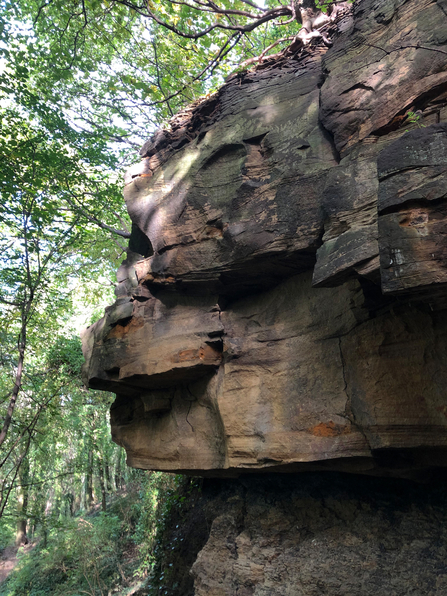I am constantly amazed by the wildlife that people, of all walks of life, manage to observe in their urban and suburban parks, gardens, churchyards and golf courses. From kittiwake colonies on the Quayside, to small mammals and fungi in semi-ancient woodland in our denes; from a myriad of insects in ponds caused by mining subsidence, to multiple wildflower and bee species in reclaimed city meadows and beside fairways, and yes, even bats in belfries.
The same false assumption applies to rocks too. No-one expects the urban environment to have any interesting geological stories to tell. But it does! I’m not talking here of a report that could be written about Newcastle’s building stones: the majesty of Central Station and its Prudhamstone sandstone, or the exotic granites cladding Northumberland Street’s shops. No, these are tales of local city rocks, rocks that are still in situ, rocks that you may have walked past without giving them a second thought.
Last year, with two other geologists, I helped Newcastle City Council identify places that were special because of their geology. We probably reviewed over 50 potential sites. Some, which have much local significance, didn’t make the cut; they are now barely visible. Many of these were big, old sandstone quarries, for example in Kenton and Heaton, which provided stone for some of the city’s buildings. But at the end of the search we thought five bedrock sites had sufficiently interesting stories to tell (and could be made accessible enough) to be designated as Local Geological Sites.
Curious? Take a walk down Jesmond Dene, or along the Hadrian’s Wall Trail at St Anthony’s. Gaze into the Dene’s old quarries and up at the cliff beside the River Tyne. See those boring-looking, inanimate sandstones, and shales? If they could speak they’d tell you a tale of when they were once part of an enormous sand-laden river flowing into a shellfish-filled muddy lagoon at the edge of the sea. And those thin little coals? Well they were once plants in a sub-tropical swamp filled with 20 metre tree ferns and giant insects.
Or stroll across a bit of the Town Moor between Cow Hill and Fenham allotments. Notice the cow pastures are not quite cricket-pitch flat, quite hummocky in fact. That’s because you’re looking at collapses into ancient bell and pit and pillar and stall mine workings in the High Main coal seam - a rare glimpse of the industry that made Newcastle rich and famous.
How about a trip out west to Throckley and Walbottle Dene? Now slowly being reclaimed by nature, but still there in the valley sides, is evidence of shafts and adits for coal, and an old quarry in a whin dyke that was once a vertical blade of molten rock searing through the ground at 1,200 degrees.
But I’m saving the best story to last. I will admit the evidence is bit subtle and you’re just going to have to trust me on this one. At the north end of Sugley Dene are rocks tilted at weird angles; they are surface evidence of a big fault; a 200m vertical dislocation in the bedrock. It’s the Ninety Fathom Dyke, a feature well known to miners across the region. Why is it special? Because its origins probably go back 420 million years, when two of the Earth’s tectonic plates collided here. The join line is called the Iapetus Suture.
So when you are next having a drink with your friends, listening to the golf addict drone on about his double birdie, the wine connoisseur describe impertinent noses and the cyclist his revolutionary rear wheel; wait for them to pause for breath. Then quietly mention that in Denton the other day you stood on a spot where two continents collided. I can guarantee they won’t look at you the same again.


